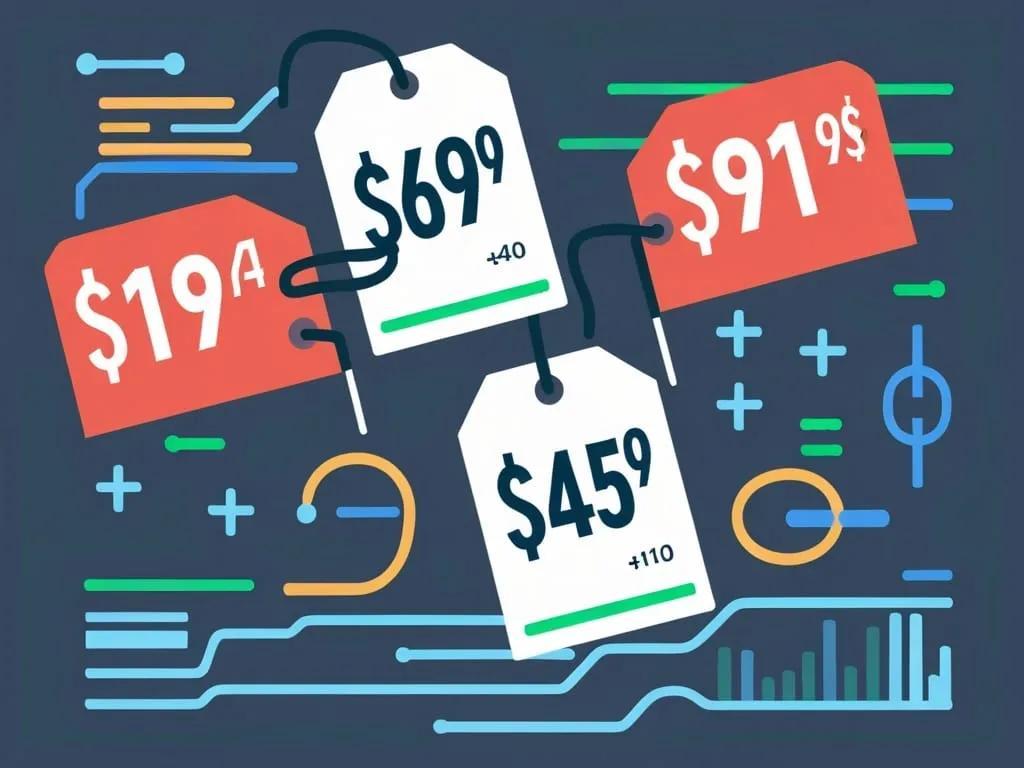Have you ever found yourself wondering why the price of that plane ticket skyrocketed in just a few hours, or why the product in your online cart suddenly became more expensive the next day? This phenomenon is not just a coincidence; it's the result of a sophisticated pricing strategy known as dynamic pricing.
To understand this better, let's follow the journey of Emma, an everyday shopper who often finds herself navigating the complex and ever-changing landscape of online shopping. Emma's story is a common one, but it highlights the intricate mechanisms behind dynamic pricing and how it affects our daily shopping experiences.
The Concept of Dynamic Pricing
Dynamic pricing is a strategy where businesses continuously adjust the prices of their products or services in real-time, based on various factors such as demand, supply, competition, and even customer behavior. This practice is not new; it has been around for decades, particularly in industries like airlines and hospitality. However, with the advent of advanced technology and AI, dynamic pricing has become more prevalent and sophisticated.
For Emma, a typical shopping day might start with browsing her favorite online store. She adds a few items to her cart, only to find out the next day that the prices have changed. This is because the store's algorithms are constantly monitoring market conditions. If demand for a particular product increases, the price might go up. Conversely, if there is a surplus or low demand, the price could drop.
Real-Time Adjustments
One of the most striking aspects of dynamic pricing is its ability to adjust prices in real-time. Online retailers like Amazon are notorious for this. They can update prices multiple times a day, sometimes even within minutes, to reflect changes in market conditions. This strategy is often referred to as "repricing," and it allows businesses to stay competitive and maximize their revenue.
For instance, if Emma is looking to buy a new smartphone, she might notice that the price changes several times during the day. This could be due to various factors such as a competitor lowering their price, a change in demand, or even the time of day. Dynamic pricing software uses data from multiple sources, including shopping history, competitor pricing, and past sales volumes, to make these adjustments.
The Role of AI and Technology
Dynamic pricing relies heavily on advanced technology, particularly AI-informed pricing software. These tools can manage the pricing of hundreds of thousands of products across different channels and locations. They track a myriad of factors, including market trends, customer behavior, and competitor activity, to optimize prices.
Emma might not realize it, but when she shops online, she is interacting with sophisticated algorithms that are constantly analyzing data to set the best possible prices. This technology not only helps businesses but also provides consumers with real-time price updates, ensuring they get the best deals available.
Benefits for Businesses
Dynamic pricing offers several benefits for businesses. It allows them to stay competitive by adjusting prices based on real-time market conditions. This strategy can lead to significant sales growth and increased profit margins. According to some studies, businesses that implement dynamic pricing can see a 2 to 5% increase in sales and a 5 to 10% bump in profit margins.
For Emma's favorite online store, dynamic pricing means they can clear off outdated inventory quickly and efficiently. By lowering prices during periods of low demand, they can stimulate sales and avoid holding onto unsold stock. This approach also helps in understanding customer behavior and tracking trends, which can be invaluable for making informed business decisions.
Ethical Considerations
While dynamic pricing can be beneficial for businesses, it also raises several ethical concerns. One of the main issues is transparency. Consumers often feel confused or taken advantage of when prices fluctuate frequently. This can lead to a loss of trust and loyalty if not managed properly.
Emma, like many consumers, values transparency and fairness in pricing. She might feel frustrated if she perceives that the prices are being manipulated or if she feels she is being charged more than others for the same product. To mitigate this, businesses need to ensure that their pricing strategies are clear and communicated effectively to their customers.
Personalized Pricing vs. Dynamic Pricing
It's important to distinguish between dynamic pricing and personalized pricing. While dynamic pricing adjusts prices based on market conditions, personalized pricing involves setting prices based on individual consumer behaviors. This means that different consumers might see different prices for the same product based on their past shopping experiences.
For Emma, this distinction is crucial. She might appreciate dynamic pricing if it means she gets a better deal due to lower demand, but she would be less comfortable with personalized pricing if it feels like she is being targeted unfairly.
Real-World Examples
Dynamic pricing is not limited to online shopping; it is used in various industries. Airlines, for example, have been using dynamic pricing for decades. They adjust ticket prices based on how far in advance travelers book, demand for the destination, time of departure, and other factors.
In the fast-food industry, restaurants like McDonald's and Burger King use dynamic pricing by offering deals during slow parts of the day. This strategy helps them attract more customers during off-peak hours and maintain profitability.
Even service providers like Uber and DoorDash use a form of dynamic pricing known as surge pricing. When demand is high, prices increase to reflect the scarcity of the service. This approach helps balance supply and demand in real-time.
Managing Customer Expectations
To make dynamic pricing work effectively, businesses need to manage customer expectations carefully. This involves setting clear price floors that reflect the brand's value while allowing for flexibility to stay profitable. It also means ensuring that the customer experience is seamless and transparent.
For Emma, a good customer experience is key. She appreciates when her favorite store offers free shipping, easy returns, and superior customer service. These elements can offset any concerns she might have about fluctuating prices and make her more likely to return to the store.
The Future of Dynamic Pricing
As technology continues to evolve, dynamic pricing is likely to become even more sophisticated. With the use of AI and machine learning, businesses will be able to make more accurate predictions about market trends and customer behavior.
For consumers like Emma, this means that shopping will become even more personalized and efficient. She will be able to find the best deals quickly and easily, and businesses will be able to offer her products at prices that are optimized for both parties.
Conclusion
Dynamic pricing is a complex and multifaceted strategy that is changing the way we shop. Through Emma's journey, we see how this practice affects everyday shopping experiences. While it offers numerous benefits for businesses, it also raises important ethical considerations that need to be addressed.
As consumers, being informed about dynamic pricing can turn what seems like a confusing and opaque practice into a savvy shopper's playground. By understanding how prices are set and adjusted, we can make better choices and find the best deals available. In the end, dynamic pricing is not just about adjusting prices; it's about creating a more efficient, competitive, and transparent marketplace.






